Table of Contents
Course Materials
Industry Insight 1
“You have all joined this MA for a multitude of reasons. One of your aspirations may be to carry out a new start-up venture, or perhaps you and your team are thinking of starting your own company together. For whatever reasons this may be, it is essential to consider the implications of starting a new company, while also being open to new opportunities. For this week’s Spark activity, imagine you were to hypothetically incorporate a company tomorrow. Each of your group members would be listed as directors for this new company ” (Falmouth University 2021).
What scenarios can you envisage that may impact your chance of finding success together?
Team Rock-it’s project is ambitious, requiring a long product roadmap and investment in an idea; the first thing I might change is our project management strategy. I would set up a couple of small teams to produce user research and prototypes on some small, medium and bigs ideas, aimed at the funding available – this is something Games Studio Director and Producer of Brain and Nerd talked through in a mentorship session through Limit Break. If we were to successfully achieve funding on one concept, we then pull team members onto that project, while we continue to work on other prototypes that might successfully achieve funding.
The biggest impact on finding success together relies on creating a supportive atmosphere, if I were to run my own studio as a director I would champion emotional vulnerability; something easier to talk about than to do. During Co-Creative Design and Development I’m not sure that I did enough, to support every Team Rock-it team member. One of the most difficult aspects of my personal development and experience is issues of conflict within teams or even serious allegations of unfair treatment. I think I am an empathetic person but sometimes when things get too hard I can shut down instead of face the problem straight on. Blizzard has recently been in the news, among other games studios for being hit with a lawsuit for creating a hostile environment for women to work in. “The claims paint a disturbing picture of life for female employees: rampant sexual harassment, gender discrimination, retaliation, and a “frat boy” workplace culture where men objectified women’s bodies and openly joked about rape” (Paul 2021). Blizzard’s response to the lawsuit was entirely inadequate and staff have organised a walk-out. The news should make us all stop and think about what we are doing to combat unhealthy work practices.
I do have the confidence and skills to one day be a part of a team, that creates games, but I see the company as a flat structure. “That’s why Valve is flat. It’s our shorthand way of saying that we don’t have any management, and nobody “reports o” anybody else. We do have a founder/president, but even he isn’t your manager. This company is yours to steer—toward opportunities and away from risks. You have the power to green-light projects. You have the power to ship products” (Valve 2012). The approach has not been without criticism, “the glittering aura of Valve’s “no boss” culture has started to fade. In 2013, an ex-employee described how the company had “a pseudo-flat structure”. “There is actually a hidden layer of powerful management structure in the company,” she said, which made it feel “a lot like high school”. (Spicer 2018). Learning from their mistakes gives Team Rock-it an opportunity to do it better with inspiration from successful studios like SuperGiant games. I don’t believe in a structure where some skills are valued over others, leadership would not equal more pay or special privileges. Often companies and studios run into trouble with flat structure management, when they scale up, so…
Team Rock-it would stay small
Team Rock-it would have members of staff dedicated to team happiness so we can continue iterating on how best to make everyone feel good, enjoy what they do and focus
Team Rock-it would champion inclusivity and an environment where it’s okay to be emotional, it’s okay to get upset and have creative differences, it’s okay to be yourself
Team Rock-it would have zero tolerance for bullying and discrimination to protect everyone, so they can focus on being fabulous
Fig 1. Masters 2021. Start-up Venture
Spry Fox – ‘Innovate in your Pants’
- “Based on your experience so far, can you relate to the way the company operates?
- What principles can you apply to your own day-to-day operations?” (Falmouth University 2021).
Spry Fox programmer Andrew Fray talks about operating a team in a distributed scrum. Spry Fox: “want to make the world a happier place” and they’re “using games to do it” (Spry Fox 2021). “We want to help people connect with their old friends and make new ones. We want to give people more ways to express and challenge themselves. But mostly, we just want to give people more ways to have fun and enjoy their lives!” (Spry Fox 2021). Fray’s talk demonstrates how a small remote team can align their goals.
During this module, I have gone from a team of five to a team of two and can relate to the simplicity of communication in smaller numbers. In the concept phase, Spry Fox keeps the teams small, with one programmer and no artists so that communication is simple. The list of tools used is simple, with no mention of Jira or complex software at this stage but Skype, GDrive, Dropbox and Trello. Our remote team (Team Rock-it) is using very similar tools designed to make distributed planning and communication easier. When they are using those tools they keep a record of all their old ideas, explaining that they begin a 2-page design document on Google Docs, then they start a new page, so they can refer back to it all.
Week 9: Hi9 & Business Start-Up
“The focus this week is to prioritise the team project development. However, you should engage with the content in parallel to the project development, especially if you have aspirations to evolve the team project into a tech start-up, go self-employed or start a business. The following video features Wo King, CEO and founder of Hi9, who we heard from back in Week 2. In this video he discusses tech start-ups, focusing on the importance of having more than one person in the team to share the load, and how much work they undertake on a daily basis… Consider how much workload a single person can carry, and the importance of a team which works together and shares the workload” (Falmouth University 2021).
My ambitions include creating a games studio one day, and the advice from Wo King to find someone else, to share that load to bounce ideas off resonated with me. I’ve thought about it before, there are many people I reach out to before every module, every project and every idea. No one works in a silo and my friends and family heavily influence all my creative work, as well as my fellow students, teachers and everyone who has given me any feedback or encouragement. I already have found that I have to be selfish, and look after myself, often spending many evenings learning to develop games, a new animation tutorial or research, working on a game jam or new idea. Fortunately, I’ve always been in a relationship where we both respect our specialist interests. So I’ve found I’ve already begun to take Wo King’s advice although I’ve not found a team partnership where our goals align for games design and development. I have set myself a goal to start producing games as a soloist and as a team throughout my MA and beyond.
Wo King’s crucial takeaway tip though is to learn machine learning. So my SMART goal for the future is to do this!
Keep up the Good Work and Crunch Culture
Week 9: Challenge – Keep Up the Good Work
“For this week’s activity, to avoid crunch, devise and propose a strategy or method with your colleagues. During your next team meeting, add this point to your agenda, carry out this activity and make a plan, in whichever format is best for you. Your devised methodology should ideally be based on existing research or your own experience related to team work. After your meeting, your team leader should post your notes in this forum, explaining the approach your team will take to avoid crunch mode. You are also encouraged to review the other comments and provide some insight to your strategy, aiming to learn from each other” (Falmouth University 2021).
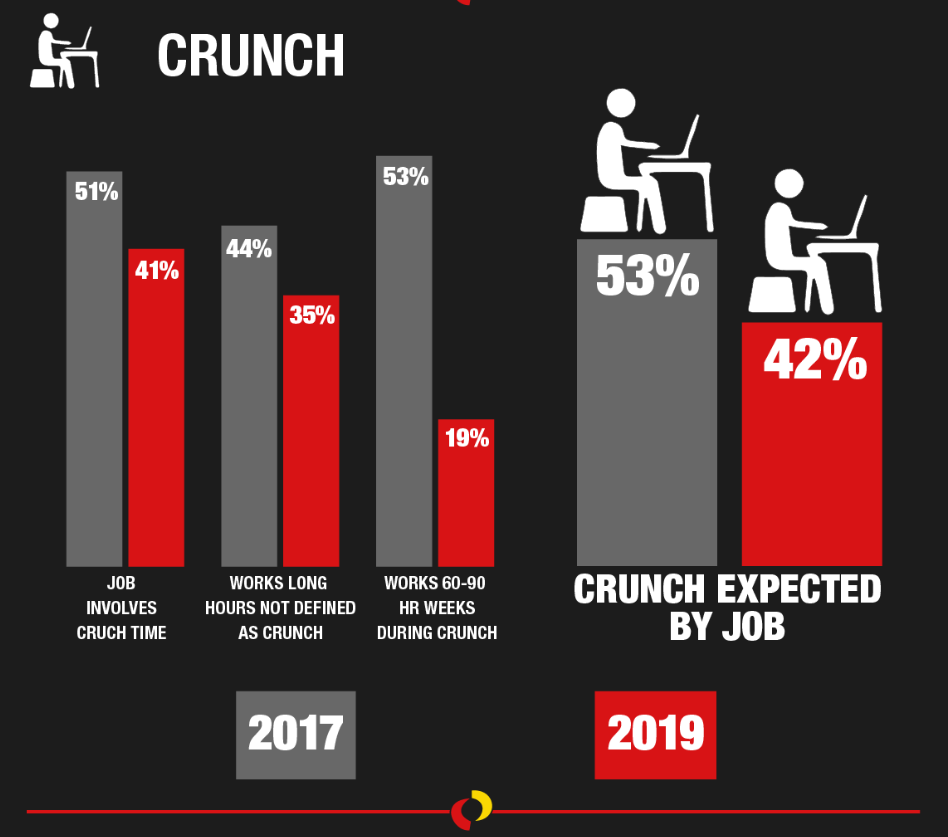
One question you might ask is why would anyone crunch? “What is management is trying to achieve when it sends employees off on death marches? Do we honestly believe that the CEO of EA is happy that people are in the office 24/7 working their asses off?” (Robinson 2005). And yet, I have found myself on a death march to mistakes and self-punishment to try and achieve perfection in this module. Individual and external obstacles have broken all my usual rules of working, I am up late at night and worrying all day.
“But it’s not the only way. In fact, the literature shows, over and over again, that it is the very worst way. And that’s the bottom-line reason most industries gave up crunch mode over 75 years ago” (Robinson 2005).
The more the team crunches, the more work we create for ourselves. “If we can all learn to slow down and pay attention to our work, the quality and efficiency would increase significantly” (Murma 2016). The slower, more meticulous, more careful we can approach the last few weeks, the more productive we will be.
Strategies to prevent Team Rock-it from crunching, without denying the reality – we need to work some overtime
We are short on time but we can limit our overtime and make sure we rest properly. If we plan smartly, with these two factors in mind, we can avoid crunch in the future.
Plan a little overtime to meet the project deadline. “Too much overtime and schedule pressure can damage a development schedule, but a little overtime can increase the amount of work accomplished each week and improve motivation. An extra four to eight hours a week increases output by 10 to 20 percent or more” (Bonds et al. 2004).
Planning accordingly. “Care should be taken to plan accordingly so that development team members (and their families) get a chance to recuperate after crunch” (Bonds et al. 2004).
Rest and relaxation. “Obligatory Rest & Relaxation – Maintaining Mental and Physical Health Despite the best efforts of those planning any specific project, odds are good that there will some long hours incurred at the end of the development cycle” (Bonds et al. 2004).
Industry Insight 2
Phoebe Herring on Freelance
“So far, we have focused on what it means to be an integral part of a core team that is unified and working towards a shared goal. However, there are many scenarios where it is possible to work with a team and yet not be considered a core member of the team. One such mode of co-creation is freelance, where an individual joins a team for all or a specific part of the development life-cycle. Here it is important that the individual brings a new set of skills and competencies that are required and yet not present within the current team composition. There are many different ways in which freelance workers can be incorporated into a project. It is always best to bring everyone together from the beginning. However, no project is without some uncertainty and new requirements might arise as the project evolves. Great teams understand their limitations and know when to seek outside expertise. In the video that appears below, Phoebe Herring shares her experience of working as a freelancer. Phoebe Herring joined Falmouth University as a lecturer in BA(Hons) Game Art after freelancing on a variety of projects as a concept artist and promotional illustrator. Her specialty is pre-production artwork and environment design, with a strong interest in combining 3D and 2D art techniques to visualise imagined or historical worlds” (Falmouth University 2021).
- “Could your team benefit from employing a freelancer?
- What skills and competencies are missing from the team composition?
- Do you foresee any issues with employing freelancers so late into the project?” (Falmouth Unviersity 2021).
While searching for an MA and considering the options, I remember searching the lecturers at different universities and finding Phoebe Herring’s portfolio. “Her speciality is pre-production artwork and environment design, with a strong interest in combining 3D and 2D art techniques to visualise imagined or historical worlds” (Herring 2021). These are both things that also interest my practice and I found Herring’s emotional honesty about freelancing for film production and game production projects is refreshing. I particularly enjoyed the insight into the flexibilities and advantages and the pitfalls, like finding yourself embellishing to win a project and still managing to turn the conversation and job around or facing the struggle to pay bills because work has been quiet.
Week 10: Alumni Video – Warwick New
“Consider how the key takeaways apply to you and your team’s experience” (Falmouth University 2021).
Warwick New, found a gap in the market, interaction in podcasts and launched their startup through Falmouth University Launchpad. The takeaways for why Warwick New went wrong was not enough diversity of skills within the team, change fatigue and missing elements of their competitor research. Interestingly Warwick New also mentions the ‘Fail Fast’ method, which I’ve already discussed during this module.
At the start of the module, I felt any team could re-skill and create together. While I still feel this is true for games studios established with experienced leading members the idea that some projects should be cancelled and not everyone can work together are hard truths I’ve begun to learn.
Week 10: Challenge – Market Personas of RI Artefacts Week 10: Journal Entry
“As a team, find some time to get together and create a single persona that might identify with your chosen artefact. Although this is an optional activity, you may wish to incorporate your persona into your pitch assignment” (Falmouth University 2021).
The UX Team have already been working on a persona:
The user persona has supported the development of our artefact, understanding the user I am building a prototype for, their motivations, likes and dislikes and personality informs decisions in the art direction and development of features.
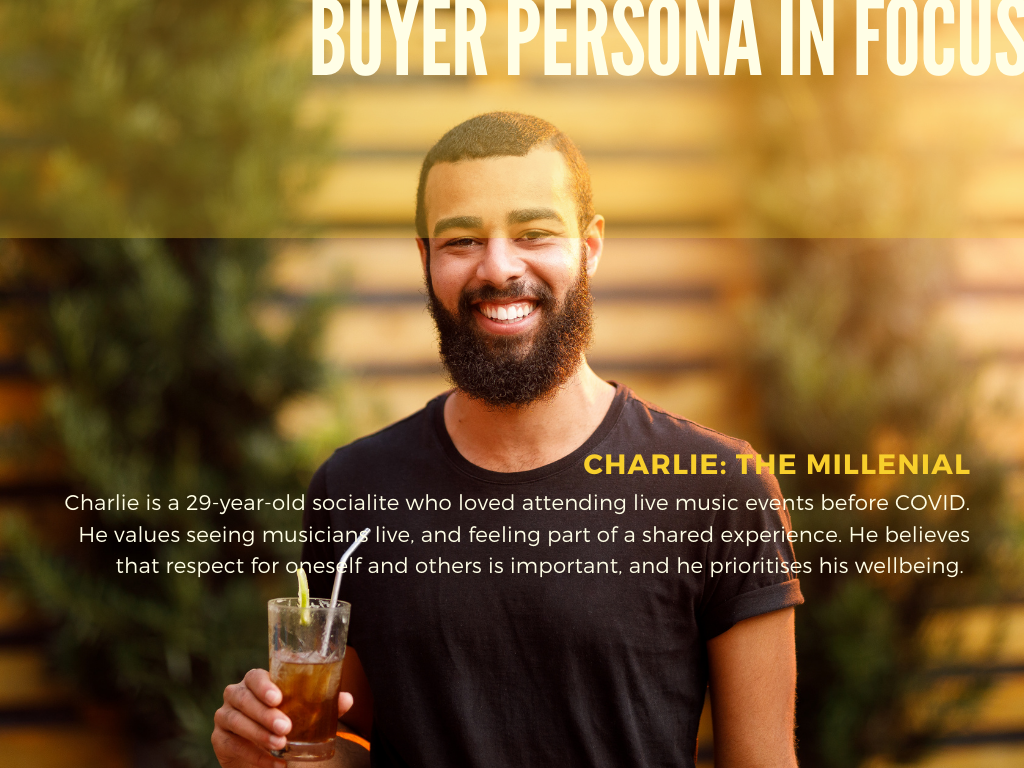
Fig 3. Petrillo 2021. Pitch Deck User Persona1 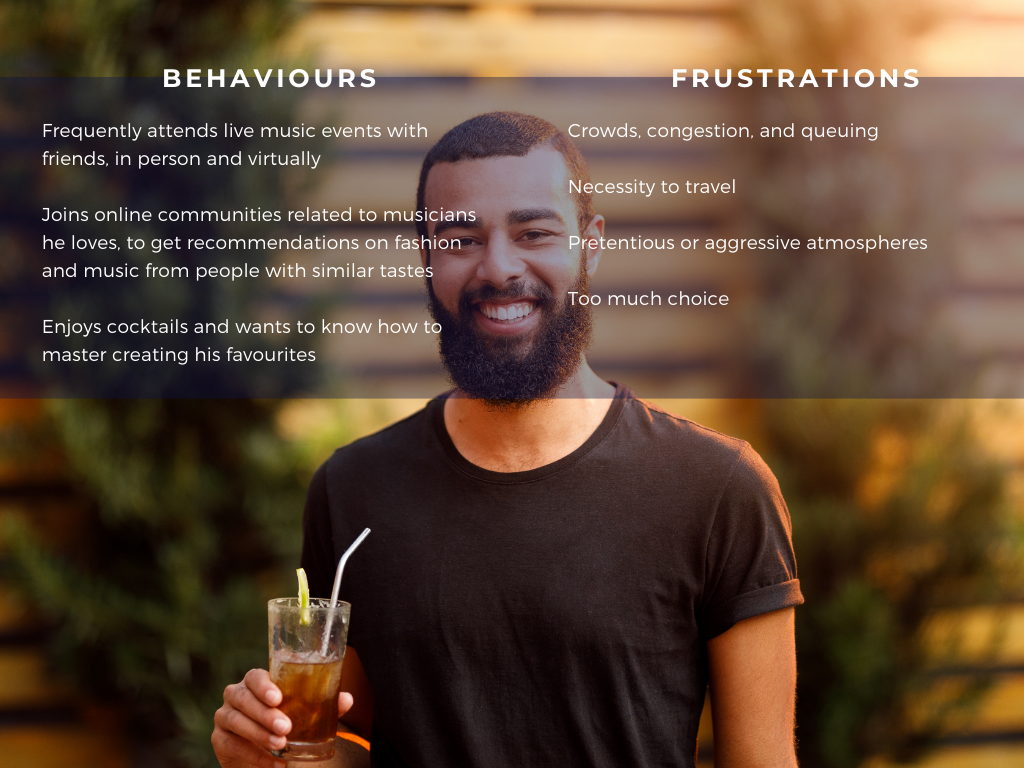
Fig 4. Petrillo 2021. Pitch Deck User Persona2
Sprint 7 ‘3D Animation and preparing the pitch for feedback’
Sprint Goal: Implement animations, optimise the space to improve performance and continue to work on the mixology class
Sprint Planning
| Collaborative Individual Tasks |
| Optimising App |
| 3D Animations with Mixamo |
| Program Feature |
| Start Programming UI |
| Synchronous/Asynchronous Team Tasks |
| Customer Journey Map |
| Pitch – Ready for Feedback |
Optimise App
The App was running very slowly on high-end devices, ideally, our prototype will be viewed on the tablet or phone. To improve the performance I adjusted the environment and tidied up any processes not needed (in Adventure Creator and PlayMaker). Adjusting the size of the terrain and limiting the number of trees immediately fixed the issue.
3D Animations with Mixamo
To bring our app SPACE alive, I searched for and implemented animations from Mixamo. We have a selection of eight avatars, to share how they might interact in our prototype I selected the following animations:
- Animate woman singing
- Man drinks at bar
- An audience dances to music
- People stand around
I also sourced the following animations for our mixology class feature:
- Bartender shakes cocktail
- Bartender adds garnish
- Bartender pours liquid
- Bartender drinks!
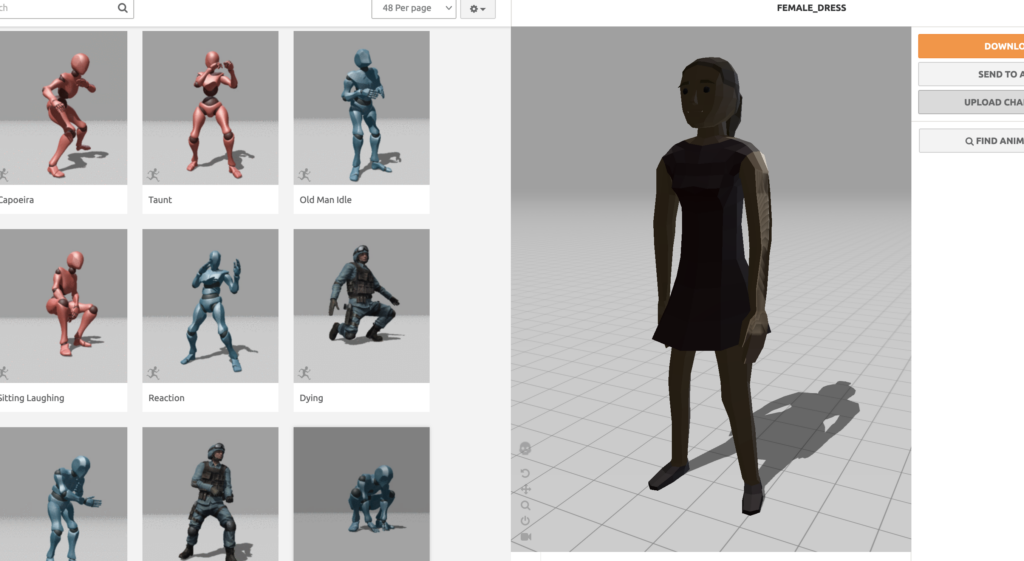
Fig 5. Mixamo [screenshot by author]
Collaborative – Customer Journey Map
Carrying out the thought process, who is our customer, and what will they do supported our reduced scope. Originally I planned to program a mini cocktail game, as we are in the final stages of our project I’ve decided to concentrate on finishing the player’s journey through our app and their event. The Customer Journey Map also reveal the key features and insights into the main purpose of our project for our pitch decks.
Fig 6. Team Rock-it! 2021. Customer Journey Map
Retro
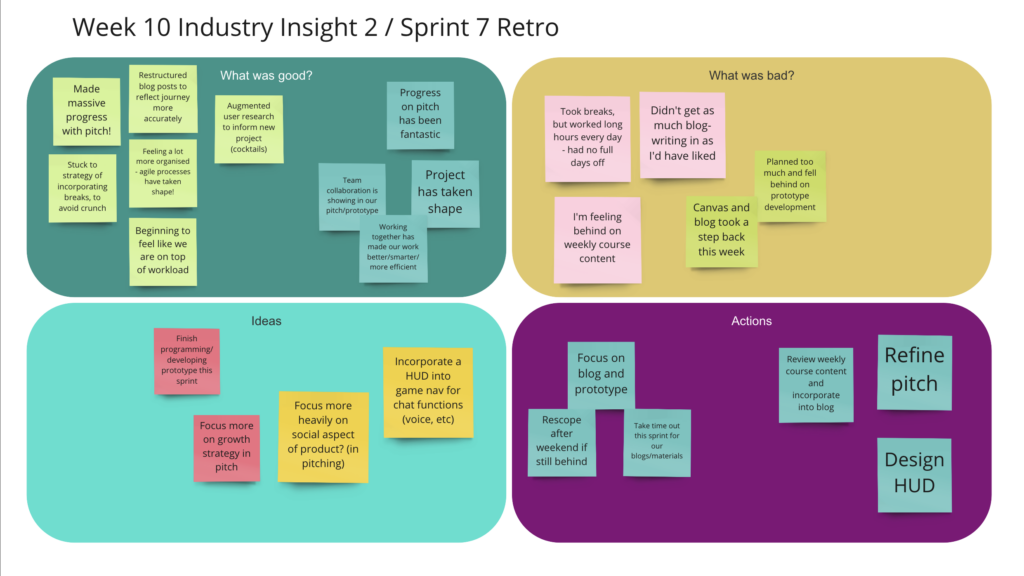
Reflection
Team Rock-it has been carrying a heavy load since the team split, we are now carrying out the work a team of 5 are designed to lift. Inevitably covering different positions takes a toll on the enthusiasm for learning and for the project when you are overburdened and I have found myself thinking about all the teams I’ve worked in where we all shared the workload. The key in those teams that worked successfully and this speaks for personal relationships as well as work ones, was appreciation and trust in the skills, knowledge and experience that team provides.
- External obstacles have impacted my progress this week
- I planned too much
- The team has scoped down ever so slightly
- A draft pitch has been achieved
Reflection on Pitch
- Time-frame is very short, and the team did push ourselves hard to get the pitch ready for feedback
- I enjoyed brainstorming and creating the pitch deck
- Presentation is still a struggle, between now and the final I need to sit down and practice. I’m still practicing from a script and struggling to remember what I am saying. I still feel low on confidence and struggle to not look pained.
List of Figures
Fig 1. Sarah MASTERS. 2021. Start-up Venture
Fig 2. IGA. 2021. Crunch [online]. Available at: https://igda.org/resourcelibrary/crunch-unsustainable-work-and-management-abuse-definitions-and-standards/ [accessed 21 Aug 2021].
Fig 3. Joanne PETRILLO. 2021. User Persona Pitch Deck1
Fig 4. Joanne PETRILLO. 2021. User Persona Pitch Deck1
Fig 5. Mixamo [screenshot by author]
Fig 6. Team Rock-it!. 2021. Customer Journey Map
Fig 7. Team Rock-it!. 2021. Retro
References
Brain and Nerd Ltd. 2021. Brain and Nerd Ltd. [online]. Available at: https://brainandnerd.com/ [accessed 8 August 2021].
BONDS, Scott et al . 2004. ‘Quality of Life in the Game Industry: Challenges and Best Practices’ [online]. Available at: https://igda-website.s3.us-east-2.amazonaws.com/wp-content/uploads/2019/10/17150654/2004_IGDA_QualityOfLife_WhitePaper1.pdf [accessed 3 August 2021].
Falmouth University. 2021. GDD730 Co-Creative Design & Development Practice. Available at: https://flex.falmouth.ac.uk/courses/913 [accessed on 3 August 2021]
FRAY, Andrew. 2021. ‘Week 9: Spry Fox – ‘Innovate in your Pants’ [online lecture]. Falmouth University. Available at: https://flex.falmouth.ac.uk/courses/913/pages/week-9-spry-fox-innovate-in-your-pants?module_item_id=54740 [accessed 8 August 2021].
HERRING, Phoebe. 2021. ‘Week 10: Phoebe Herring on Freelance’ [online lecture]. Falmouth University. Available at: ‘https://flex.falmouth.ac.uk/courses/913/pages/week-10-phoebe-herring-on-freelance?module_item_id=54820 [accessed 8 August 2021].
IGDA. 2021. ‘Crunch, Unsustainable Work, and Management Abuse Definitions and Standards – IGDA’. [online]. Available at: https://igda.org/resourcelibrary/crunch-unsustainable-work-and-management-abuse-definitions-and-standards/ [accessed 3 August 2021].
MURMAN, Chris. 2016. ‘Things Are Broken: A Case Study in Moving Toooooooo Fast | Agile Alliance’. Agile Alliance | [online]. Available at: https://www.agilealliance.org/resources/experience-reports/things-are-broken-a-case-study-in-moving-toooooooo-fast/ [accessed 3 August 2021].
PAUL, Kari. 2021. ‘Activision Blizzard Scandal a “Watershed Moment” for Women in the Gaming Industry’. 2021. the Guardian [online]. Available at: http://www.theguardian.com/technology/2021/aug/08/activision-blizzard-lawsuit-women-sexual-harassment [accessed 8 August 2021].
ROBINSON, Evan. 2005. ‘Why Crunch Mode Doesn’t Work: Six Lessons [2005] – IGDA’. n.d. [online]. Available at: https://igda.org/resources-archive/why-crunch-mode-doesnt-work-six-lessons-2005/ [accessed 3 August 2021].
SPICER, Andre. 2018. ‘No Bosses, No Managers: The Truth behind the “Flat Hierarchy” Facade | André Spicer’. 2018. the Guardian [online]. Available at: http://www.theguardian.com/commentisfree/2018/jul/30/no-bosses-managers-flat-hierachy-workplace-tech-hollywood [accessed 23 August 2021].
Spry Fox. 2021. Spry Fox [online]. Available at: https://spryfox.com/ [accessed 8 August 2021].
VALVE. 2012. The Handbook for new employees. Washington. Valve Press